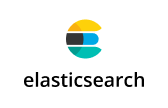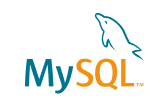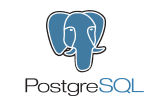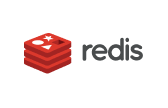Distributed event processing
Handle multiple events in real-time, providing horizontal scalability and fault tolerance.
Deploy an Apache Kafka cluster in just a few clicks with a fully managed service. Focus on application development while we match your configuration and provide monitoring, backups and upgrades.
Handle multiple events in real-time, providing horizontal scalability and fault tolerance.
Aggregate logs from various sources for analysis, debugging, and compliance.
Build an asynchronous system that can handle data streams while providing low latency.
Manage the flow of data from logistics and telematics sources, providing tracking and analysis of location, transportation and routes.
Create a flexible and scalable microservices-based architecture by exchanging messages through Apache Kafka.
It is a robust and scalable platform for processing real-time data streams:
Our platform offers convenient and flexible managed database administration, as well as reliability and high performance. We take care of the complexity of installing and configuring databases, and give you free time so you can focus on growing your business. In addition, our team of experts is always available to help with any questions you may have.
The DBaaS concept involves storing and managing data in a cloud environment, where the user does not need to install and maintain a database - he gets a ready-made and optimized solution in the cloud.

High-performance open source columnar database. Provides fast analytics and big data processing. It is optimized to run complex analytical queries on large datasets. ClickHouse offers high speed, efficient resource utilization and scalability, making it a popular choice for real-time analytics and big data workloads.
Discover
A distributed search and analytics system. It is well suited for scenarios where fast and scalable data access is required, such as site search, log analysis and real-time data monitoring.
Discover
High-performance distributed database with great flexibility, scalability and parallel query processing. It is the best choice for analytical tasks and big data processing.
Discover
A flexible NoSQL database optimized for storing unstructured data such as documents, images and social media. With easy scalability and high performance, MongoDB is the ideal choice for Big Data projects and applications requiring real-time data processing.
Discover
A powerful relational database that provides high performance and reliability. It is optimally suited for web applications, e-commerce and CMS where handling large amounts of structured data is important.
Discover
A powerful data mining and analysis tool optimized for processing large volumes of data and extracting valuable insights with full-text search, advanced analytics and data security. Well suited for complex analytical systems and real-time data monitoring.
Discover
A powerful and reliable open source relational database. It has a wide range of features, supports ACID transactions and provides flexibility for storing and processing structured data. Supports extensions and provides powerful features for database developers and administrators.
Discover
A fast, scalable storage system best suited for caching, sessions, message queues, and lightweight data analytics. Its flexibility in data structures and high performance make Redis a popular solution for web applications.
DiscoverProvide continuous protection and instant access to rapidly growing datasets. Highly scalable and cost effective storage that integrates with your application scenarios.
Distribute traffic and workloads in the most efficient way: no server downtime, overload or underutilization.
Can't find an answer to your question? Ask us and we'll tall you!
Apache Kafka is a distributed, horizontally scalable software message broker designed to organize the collection and storage of streaming data, its processing in real time with high throughput and minimal latency. Streaming data refers to data that is continuously generated by a large number of sources that typically send data records in small volumes. Examples of streaming data include log files generated by customer applications, online shopping information, user actions in games, social network activity, marketplace data, geospatial services, and telemetry data. Apache Kafka was developed to efficiently handle, process, and respond to such data streams.
Kafka is an open-source distributed system based on client-server architecture. Data is exchanged within a Kafka cluster using its own binary data transfer protocol designed to reduce the overhead of data transfer.
An Apache Kafka cluster consists of servers and clients. Some servers form the storage layer and are known as brokers, while others run the Kafka Connect mechanism and continuously import and export data as event streams. Clients host distributed applications and microservices, which work in parallel to receive, process, and generate event streams.
The Kafka cluster is fault-tolerant; if a server fails, other servers will take over to ensure uninterrupted operation without data loss.
Apache Kafka can be used wherever event stream acquisition and processing is required. Kafka is used in a wide variety of industries, but is most commonly used for the following tasks:
Our service currently supports Apache Kafka versions 2.8.1 and 3.1.0.
The user can upgrade the cluster to any supported version by selecting the desired version in the cluster properties. However, the cluster can only be upgraded upwards and once the upgrade is done, the cluster cannot be reverted back to the previous version.
Before upgrading the version, ensure that the client software will allow you to use the features of the new version of Apache Kafka cluster. As part of the cluster version upgrade, only the server software will be upgraded, not the client software.
It is recommended to upgrade the cluster to the next version relative to the current version, for example, to upgrade Apache Kafka from version 2.8 to 3.1 you would upgrade in the following sequence: upgrade the application from version 2.8 to version 3.0 and then upgrade from version 3.0 to 3.1.
The error is caused by topic log segments taking up more space than is available in the broker storage. To solve this problem, you can increase the size of disk storage or reduce the segment size for topics or the whole cluster.

If you work in IT, the term “cloud” isn’t just a buzzword — it’s a powerful tool for storing and processing data.

PaaS (Platform as a Service) was initially designed as a solution for developers to build applications without dealing with server setup and infrastructure management.

TCP/IP is the backbone of everything. This protocol stack is like the circulatory system of the Internet and cloud computing.